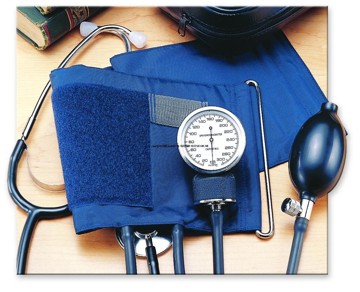St. Vincent’s Stresses Preventive Measures for Strokes
Tuesday, May 08, 2012

While not all risks of stroke can be avoided, you can make lifestyle changes to help stay stroke free.
Although up to 80% of strokes in the US are preventable, hospitals like Saint Vincent in Worcester have seen no decrease in the number of strokes each year.
In honor of National Stroke Awareness month, Saint Vincent Hospital is underscoring simple preventive measures that people can take to help ward off the risk of stroke and will be holding their annual fair at the end of the month as well as hosting a booth at the DCU’s Healthy Living Expo in the fall.
Lifestyle Choices
Many ways to prevent the risk of stroke stem from making healthy lifestyle choices.
“It’s sad because most are preventable. People can prevent them by making lifestyle changes. There are risk factors for stroke that you can avoid,” said Mary Beth Creem, RN and quality manager at Saint Vincent Hospital. “Quitting smoking, lowering blood pressure, managing your weight, and keeping your blood sugar at a healthy level are all ways to prevent the risk of stroke.”
“Another thing that can contribute is cholesterol,” she added. “A lot of people with stroke end up waiting. It’s not always painful. People think it will go away.”
As with issues related to the heart, Creem says that alcohol has been shown to be a positive thing when taken in moderation.
“Alcohol and drug abuse will of course raise your risk, but the occasional glass of wine is fine. If people just have regular checkups, treat any of their health problems, take any prescribed medications you’re supposed to, they can prevent something before it happens,” she said.
“Don’t ignore it. Get to the hospital. If nothing’s wrong, they can evaluate your risks for stroke and help you prevent one in the future. Recognize the warning signs and learn a bit about strokes and learn how you can prevent it.”
You Can’t Prevent Everything
While preventive lifestyle changes will lower your risk, unfortunately not all risks can be avoided.
“There are some things that are less preventable, like age. Older people are more at risk. Sometimes it’s a race thing. African-Americans tend to have a higher risk than others,” Creem said. “Previous stroke or family history will also put you a higher risk. You can’t avoid all of the risks. More men than women have strokes, as does an irregular heartbeat, which is something you have to have monitored by your doctor.”
“Mini-strokes” or Transient Ischemic Attacks (TIA) can also set you up to have a full blown stroke, if you don’t take preventive measures.
“In the case of a TIA, something did block the blood vessel for a minute, and usually the body can take care of that. But this does put you at a higher risk for having a full blown stroke. You should go to the hospital even with a TIA. Find out what your risk factors are and prevent a bigger problem,” Creem said.
F.A.S.T. Acting Can Save Your Life
The bottom line with stork prevention – time is everything. Whether it’s preventing your risk from giving you a future problem or reacting when you think you may be having a stroke, timing can save you.
“We hold a fair at the end of the month where we give out FAST cards. They’re wallet cards that let people know what signs they can look for – face, arm, speech, time,” she said. “These are all key things with stroke – the face especially. Check if one side is drooping. They can ask the person to smile. Another sign is if one arm is weaker than the other, or if one goes down when both are held out. Slurred speech is of course another signal.”
“If they get here within four and a half hours, a lot more can be done to help them. The sooner the better,” Creem said. “We’ve seen this with issues with the heart as well. Sometimes when dealing with the brain, people are less apt to go running to the hospital. With a heart related issue, there’s chest pain. With a stroke, people think the symptoms will go away.” Her biggest concern is people getting to the hospital when they think they need it.
“A big thing is to not ignore the symptoms. If someone is having trouble seeing or speaking, act fast, call 911. The emergency room can help you prevent a lot of the damage,” she said. “Timing in critical, if they arrive later, they can’t get that medicine.”
The Numbers Don’t Lie
Creem works with the quality committee and said that the data of strokes at St. Vincent’s shows that their efforts to raise awareness about stroke prevention have not made a significant change; people are still ignoring the issue and coming for help too late.
“We look at all the strokes that come through the hospital. We’re still finding that they’re just not coming in time. At the hospital level, we just keep stressing to come in since we haven’t seen a big change in the number.”
“It’s about lifestyle changes and not waiting a whole day.”
Related Articles
- City Retiree Health Costs Crippling Worcester
- Rhode Island Hospital Launches Stroke Support Group
- 8 Weeks to Better Living: Preventive Health Tips
- Central Mass. Awarded $5 Million To Revamp Community Health Centers




Follow us on Pinterest Google + Facebook Twitter See It Read It